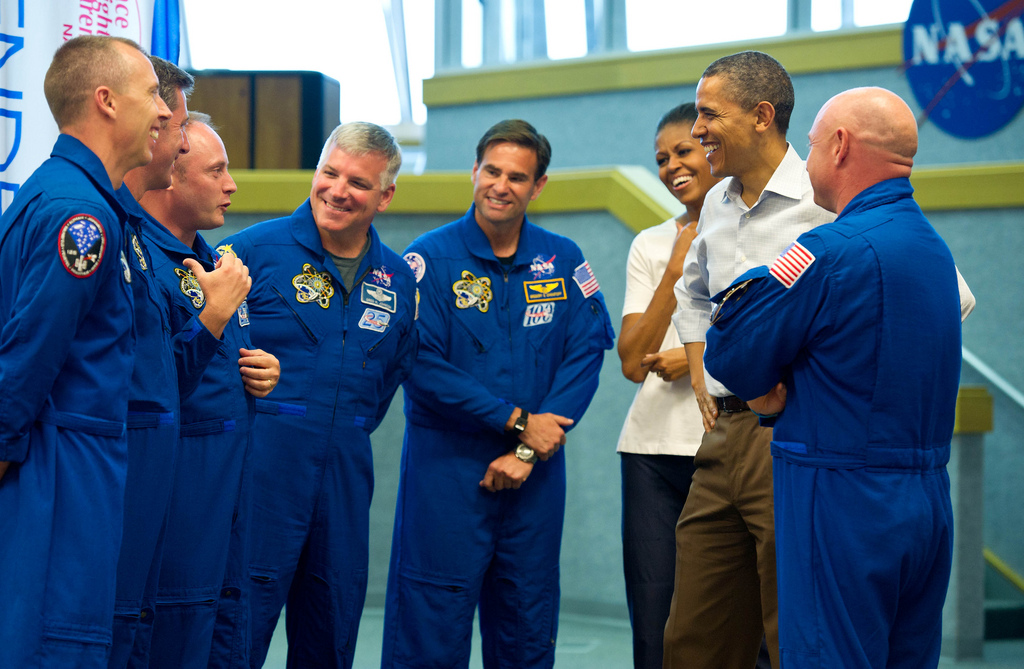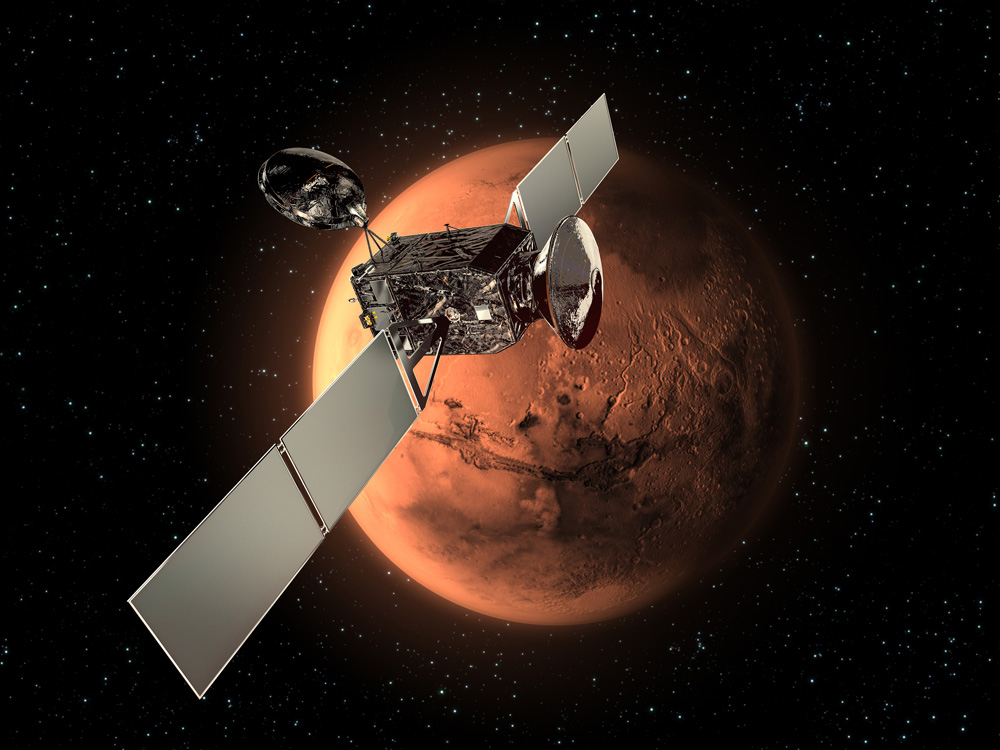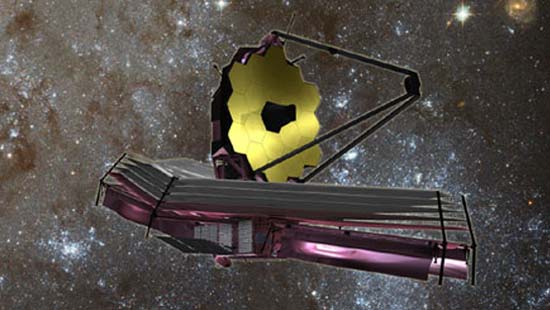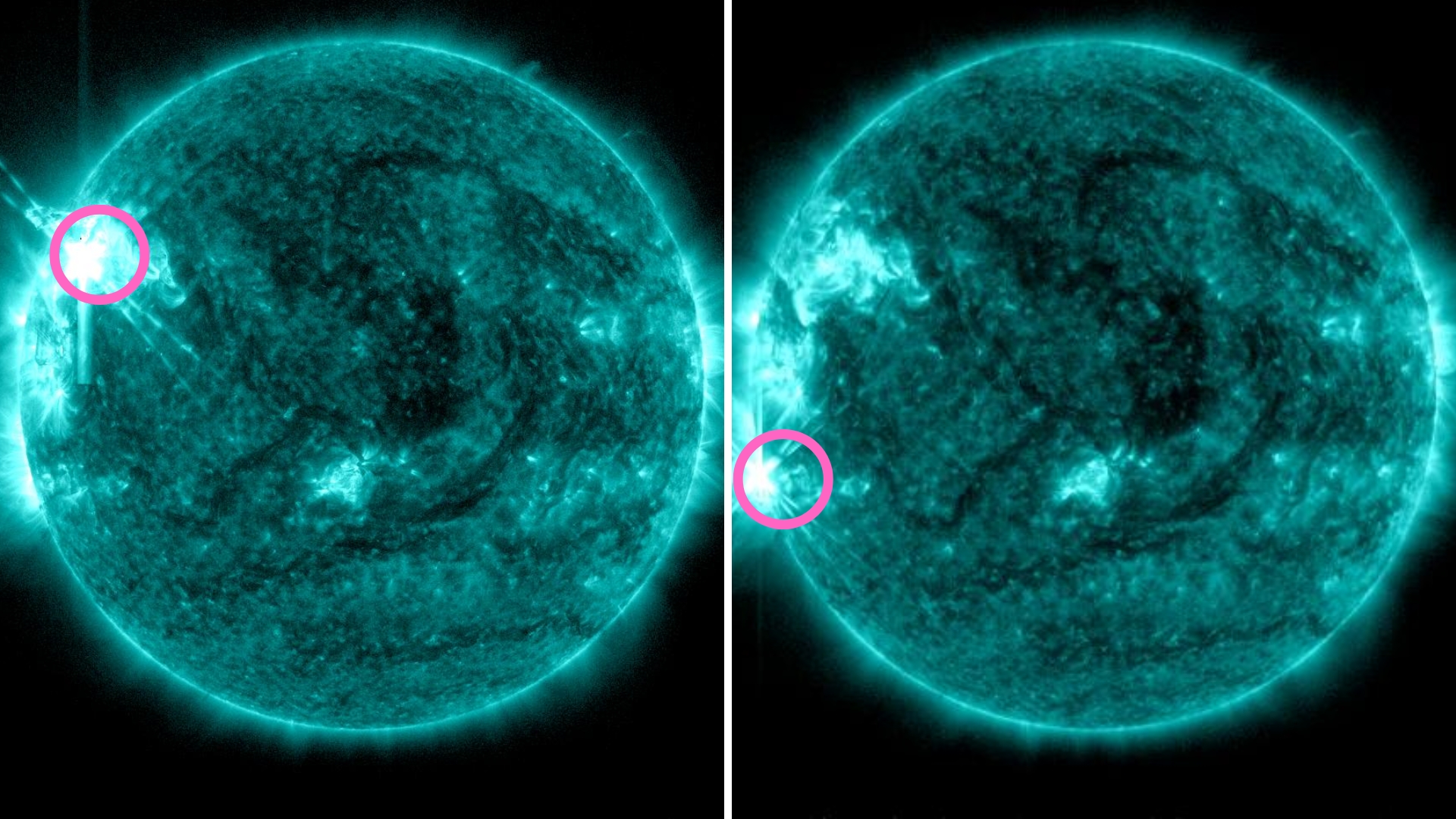Shrinking NASA Budget Forces Tough Trade-offs

U.S. President Barack Obama's proposal to roll back NASA spending to its lowest level since 2008 puts the squeeze on planetary science and other agency activities in order to accommodate a massively overbudget space telescope and a congressionally mandated heavy-lift rocket while doubling funding for a controversial commercial crew initiative.
Obama submitted the final spending proposal of his current four-year term Feb. 13 to a deeply divided Congress, which is unlikely to pass a 2013 budget ahead of a November election shaping up as referendum on taxes and spending.
NASA Administrator Charles Bolden was among the senior government executives called upon Feb. 13 to extol the virtues of their respective portions of a $3.8 trillion budget proposal the White House says holds total discretionary spending to its lowest level in 10 years. NASA's proposed $17.71 billion share, down 5.4 percent from the high-water mark set in 2010, represents only the fourth time since 1999 that a president has called for reducing NASA's budget.
"There's no doubt tough decisions had to be made, here at NASA and all across government," Bolden told reporters during a televised budget rollout at agency headquarters in Washington, D.C. "However, ours is a stable budget that allows us to support a diverse portfolio of human exploration, technology development, science, aeronautics, and education work." [NASA's 10 Greatest Science Missions]
Among the priorities supported in the NASA budget proposal now before Congress:
- Nearly $3 billion for the congressionally mandated Space Launch System (SLS) heavy-lift rocket, Orion deep-space capsule and related ground systems and infrastructure. NASA has yet to define a mission for these vehicles.
- Almost $830 million for the Commercial Crew Program, which NASA is counting on to restore independent U.S. access to the International Space Station.
- Some $700 million for the Space Technology program, $125 million more than this year.
- Roughly $630 million for the James Webb Space Telescope (JWST), which Congress threatened to terminate last year due to huge cost overruns. The $109 million increase was needed to keep the now $8.8 billion astronomy flagship mission on track for 2018.
Accommodating these priorities forced NASA to accept cuts elsewhere.
Science
Breaking space news, the latest updates on rocket launches, skywatching events and more!
Hardest hit was the Science Mission Directorate's Planetary Science Division, a $1.5 billion portfolio that drops below $1.2 billion next year in the president's plan and keeps falling until 2017.
There are no guaranteed new starts in that time frame; planning for a flagship-class mission to Europa or some other outer-planet destination is tabled indefinitely, and a lunar science campaign initiated when NASA still planned to return astronauts to the moon goes away.
More controversially, spending on robotic Mars exploration would drop nearly 40 percent next year, with further big reductions planned for 2014 and 2015.
The shrinking Mars exploration budget reflects a pullback from plans to partner with Europe on a pair of missions that would launch in 2016 and 2018 to set the stage for retrieving samples from the Red Planet.
With NASA's $2.5 billion Mars Science Laboratory rover set to land in August, the $600 million Mars Atmosphere and Volatile Evolution (MAVEN) orbiter launching late next year and another Mars mission in the running for the Discovery 12 flight opportunity, Bolden said NASA will take a timeout to devise a new Mars exploration strategy that melds science and human spaceflight goals with an eye toward cobbling together cheaper missions for 2018 and 2020.
A significant share of NASA's downsized planetary science budget would fund continued development of four U.S.-led space missions. Two of those — MAVEN and the moon-bound Lunar Atmosphere and Dust Environment Explorer (LADEE) — are slated to launch in 2013. The other two — the $900 million Osiris-Rex asteroid sample-return mission and a Discovery 12 mission that will be selected this summer — would launch in 2016.
The 2013 budget also establishes a $10 million-a-year Joint Robotics Program for Exploration that NASA says would "develop instruments relevant to human exploration beyond low Earth orbit."
LADEE will cap the short-lived Lunar Quest program. The $175 million spacecraft is scheduled for a six-month mission whose original objectives included gathering data engineers would use to design lunar outposts and robots suitable for the moon's dusty environment.
NASA's Astrophysics Division, meanwhile, would see its budget reduced slightly, to $660 million. That figure that does not include the $628 million sought for the JWST program, which now reports directly to NASA Associate Administrator Chris Scolese, the agency's third in command. [Photos: Hubble's Successor, the James Webb Space Telescope]
The Astrophysics Division budget is largely focused on operating roughly a dozen missions, including the recently refurbished Hubble Space Telescope and the Stratospheric Observatory for Infrared Astronomy — a telescope-equipped 747 jetliner that continues to undergo development even as science flights begin.
Planning for the Wide-Field Infrared Survey Telescope, the astrophysics community's top-priority large-scale mission after JWST, has been shelved after garnering $3 million in 2011 to get going.
Projects still on the books include the $170 million NuSTAR telescope launching this spring, another Small Explorer-class mission called Gravity and Extreme Magnetism launching in late 2014, and completion of an instrument NASA is building for Japan's Astro-H spacecraft.
NASA's Earth science and heliophysics activities fare better than astrophysics and robotic planetary exploration in the 2013 proposal. Both climate-centric pursuits would see modest funding increases.
The Earth Science Division would continue to grow through 2015, as the Landsat Data Continuity Mission, Global Precipitation Measurement satellite, Soil Moisture Active-Passive mission and IceSat-2 proceed toward launch.
Work on the Orbiting Carbon Observatory-2 (OCO-2), a copy of a satellite lost in 2009 in the first of back-to-back Taurus XL rocket failures, is expected to conclude in time for a 2013 launch. But NASA says the switch to a different rocket for OCO-2 could delay launch until 2015, adding considerable expense.
NASA also expects to pick a Venture Class small satellite Earth science mission later this year that would launch in 2017. Selection of the Venture Class program's first mission-of-opportunity instrument — so called because it would hitch a ride on non-NASA spacecraft — is slated for 2013.
A number of the bigger proposed missions in NASA's Earth science queue, including Ascends, Clarreo, Desdyni and the GRACE Follow-On, face additional budget-driven delays of one to two years or more.
Heliophysics is something of a bright spot in an otherwise gloomy science budget. The $1.4 billion Solar Probe Plus mission stands to find its footing, as NASA seeks to double its budget to $112 million in 2013 and keep it tracking toward a late-2018 launch.
Likewise, NASA still plans to join the European Space Agency on the Solar Orbiter Collaboration. NASA's share of that 2017 mission, which includes providing the launch and two instruments, is expected to top $400 million.
Spending on the $860 million Magnetospheric Multiscale mission is also slated to rise in 2013, although not as much as previously projected, as NASA's Goddard Space Flight Center works to complete development of the four identical spacecraft in time for a 2015 launch.
NASA also plans to launch the $680 million Radiation Storm Belt Probes mission in September followed by the $170 million Iris satellite in mid-2013. The agency also plans to select and begin development on the next Heliospheric Explorer mission next year.
Overall, the heliophysics budget would rise to $647 million — a 4 percent increase — and remain at about that level for several years.
Human Spaceflight
William Gerstenmaier, associate administrator for NASA's Human Exploration and Operations Mission Directorate, said his nearly $8 billion portion of the agency's budget includes more money for International Space Station operations, space communications networks upgrades and the purchase of a third Tracking and Data Relay Satellite from Boeing Space & Intelligence Systems. [Photos: Building the International Space Station]
Nearly half of Gerstenmaier's 2013 budget is set aside for the SLS, Orion and the Commercial Crew Program, which is soliciting proposals for a 21-month effort aimed at keeping at least two competing spacecraft on track to enter service in 2017.
Of the $3 billion requested for SLS and Orion, roughly 10 percent would be spent on related ground systems, infrastructure and other activities. As a result, the funding directly available for SLS and Orion vehicle development would be down about $325 million from the level Congress approved for 2012. Gerstenmaier said the budget is sufficient to keep both on track for a 2017 unmanned test launch.
The Commercial Crew Program budget, meanwhile, would rise by more than $420 million, approaching the level NASA requested for the program last year without success.
Phil McAlister, NASA's director of commercial spaceflight development, said if Congress halves the commercial crew request, as it did last year, the program may not be worth pursuing since the vehicles might not be ready in time to support the space station. [Top 10 Private Spaceships Headed for Reality]
"I would say it doesn't make a whole lot of sense to do this program," McAlister told reporters Feb. 14 in Cocoa Beach, Fla. "Just one test flight is going to be a couple hundred million dollars, probably. So that's your whole year's funding, right? So it really doesn't make sense at that kind of funding level. If we felt like that's all we could get, we would definitely need to re-evaluate the program."
Commercial crew's big increase was not lost on Sen. Kay Bailey Hutchison (R-Texas), a senior member of the Senate Appropriations Committee and a strong backer of SLS and Orion. "The Administration remains insistent on cutting SLS and Orion to pay for commercial crew rather than accommodating both," Hutchison said in a Feb. 13 press release.
Sen. Bill Nelson (D-Fla.), a frequent Hutchison ally on NASA matters, cast the administration's request as a "balanced approach" to human spaceflight. He told attendees of the Federal Aviation Administration's Commercial Space Transportation Conference on Feb. 16 he would like to see the Commercial Crew Program funded above the $406 million it received for 2012.
Nelson said a successful launch of SpaceX's unmanned Dragon capsule to the space station this spring would help make the case for increased funding. "If that occurs in April, that is going to be right at the right time, because that's about the time that the decisions are starting to be made with regard to appropriations," he said.
Whether Congress finishes the appropriations process before November's general election is another matter.
"I think the most likely outcome is no budget and maybe a continuing resolution for all of fiscal 2013, because it's all tied up in election-year politics," said John Logsdon, a space policy expert at George Washington University.
Howard McCurdy, a public policy professor at American University, agreed. "I doubt that any of the controversial bills will be enacted before November," he told Space News.
If Congress fails, as it has repeatedly in recent years, to enact spending legislation by the Oct. 1 start of the new fiscal year, NASA and other federal agencies would remain funded at current levels until a reshaped Congress and whoever wins the White House can reach agreement on a new budget.
McCurdy, for one, doubts that NASA would come out ahead under this scenario.
"If anything, NASA's budget will head down," he said. "Welcome to the new reality."
Space News correspondent Irene Klotz contributed from Cocoa Beach, Fla.
This article was provided by Space News, dedicated to covering all aspects of the space industry.
Join our Space Forums to keep talking space on the latest missions, night sky and more! And if you have a news tip, correction or comment, let us know at: community@space.com.
Brian Berger is the Editor-in-Chief of SpaceNews, a bi-weekly space industry news magazine, and SpaceNews.com. He joined SpaceNews covering NASA in 1998 and was named Senior Staff Writer in 2004 before becoming Deputy Editor in 2008. Brian's reporting on NASA's 2003 Columbia space shuttle accident and received the Communications Award from the National Space Club Huntsville Chapter in 2019. Brian received a bachelor's degree in magazine production and editing from Ohio University's E.W. Scripps School of Journalism.




